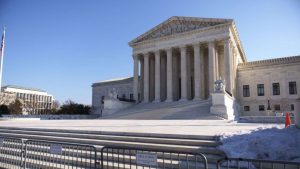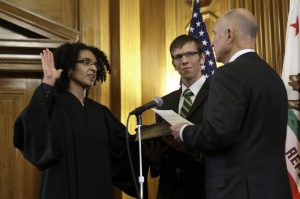
This last Wednesday, January 26, it was announced that Supreme Court Justice Stephen Breyer will be stepping down from his position on the court, ending a 28-year term. Living in the politically divided world that exists today, this announcement carries with it the enormous baggage of uncertainty for some and hope and optimism for others. In this article, we will be going into depth into the history of Breyer’s term as well as the ramifications for the future.

History:
After graduating Magna Cum Laude from Harvard Law, Breyer started his career as a clerk for Justice Arthur Goldberg, an associate justice on the Supreme Court of the United States. He would then go on to serve as a Special Assistant to the Assistant U.S. Attorney General for Antitrust, work as an associate professor at Harvard Law, serve as an Assistant Special Prosecutor of the Watergate Prosecution Force, and finally become a judge for the U.S. Court of Appeals in 1980.
Breyer would eventually be appointed to the Supreme Court in 1994 by President Clinton, coming one year after the appointment of Justice Ruth Bader Ginsburg in 1993. While not as publicly known as some of his Supreme Court colleagues, Breyer, nonetheless evaluated many well-known and controversial cases.
For example, in 2000, Breyer wrote a majority opinion in Stenberg v. Carhart which ruled a Nebraska law banning partial-birth abortions was unconstitutional due to its infringing nature on women’s right to decide on their own abortion. Furthermore, in 2015, Breyer dissented in Glossip v. Gross, a case dealing with the constitutionality of Oklahoma’s lethal injection process- choosing to question the legality of capital punishment entirely. As a whole, Breyer was regarded for his pragmatism on the bench, choosing to follow the framer’s intent rather than a strict interpretation of the constitution.


A Future Without Breyer:
Obviously, this news comes alongside controversies surrounding the supposed genocide of the Uyghur peoples in China as well as the increased Russian military tensions in Ukraine, however, this particular development holds a significant amount of weight for future elections as well as advancing political agendas. Case in point: this latest news has gotten democratic leadership rushing to fill Breyer’s spot while they continue to hold the Presidency and Senate, something that might change rather quickly in the upcoming November elections. As of right now, Breyer is holding the court to a 6-3 split between Republicans and Democrats.
As was promised during his campaign, President Biden plans to fill Breyer’s spot with America’s first “black female” supreme court justice. Two of the most promising contenders are U.S. Circuit Judge, Ketanji Brown Jackson and California Supreme Court Justice, Leondra Kruger. However, as seen in previous presidencies, the Republican party will be doing whatever it can to hinder this process until the midterms, making sure Breyer’s replacement reflects their own ideological beliefs.

Stay tuned to The Roundup for more updates regarding the Supreme Court vacancy!






